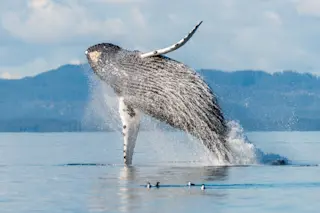Climate change, deforestation, sea level rise and mass extinction; the news often feels pretty bleak when it comes to the environment. But our planet is also incredibly resilient, and a few simple steps can go a long way towards protecting endangered species. At one point or another, these animals bordered on extinction — and then made a roaring comeback.
(Credit: godi photo/Shutterstock)
godi photo/Shutterstock
A few decades ago, the wood stork was on the brink of extinction. Inland water had been diverted from the Everglades as a result of development. Fish stores plummeted and so did the number of woodstorks, says Simona Picardi, an assistant professor of ecology at Utah State University.
These massive birds feed by feel, meaning they drop their beaks into the water and wade until they find a fish. Once they do, their beaks slam shut, an instinctive response that’s among the fastest in the animal ...















